Advertisements
Advertisements
प्रश्न
A point positive charge is brought near an isolated conducting sphere (figure). The electric field is best given by ______.
पर्याय
उत्तर

Explanation:
• Electric field lines come out of the positive charge and go into the negative charge.
• Tangent to the field line at any point gives the direction of the field at that point.
• Field lines are always normal to the conducting surface.
• Field lines do not exist inside a conductor.
The explanation to this problem can be done by keeping two things in mind.
- Concept of induction
- The electric field lines interact with a conducting body normally.
Let us discuss the phenomenon of induction involved in this case. When a positive point charge is brought near an isolated conducting sphere without touching the sphere, then the free electrons in the sphere are attracted toward the positive charge. Thus, the left surface of sphere has an excess of negative charge and the right surface of sphere has an excess of positive charge. It should be noted that both kinds of charges are bound in the metal sphere and cannot escape. They, therefore, reside on the surface of the sphere.
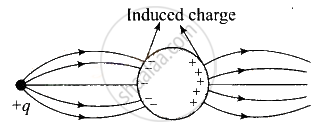
An electric field lines start from a positive point charge and ends at a negative charge induced on the left surface of sphere. Also, electric field line emerges from a positive charge, in case of a single charge and ends at infinity.
Here, all these conditions are fulfilled in Figure.
APPEARS IN
संबंधित प्रश्न
- An electrostatic field line is a continuous curve. That is, a field line cannot have sudden breaks. Why not?
- Explain why two field lines never cross each other at any point?
The figure shows the field lines on a positive charge. Is the work done by the field in moving a small positive charge from Q to P positive or negative? Give reason.
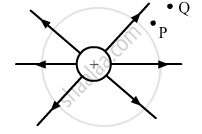
The intensity of the electric field at a perpendicular distance of 0·5 m from an infinitely long line charge having linear charge density (λ) is 3-6 × 103 Vm-1. Find the value of λ.
Answer the following question.
Derive an expression for the electric field due to a dipole of dipole moment `vec"p"` at a point on its perpendicular bisector.
Explain why two field lines never cross each other at any point?
In figure, two positive charges q2 and q3 fixed along the y axis, exert a net electric force in the + x direction on a charge q1 fixed along the x-axis. If a positive charge Q is added at (x, 0), the force on q1
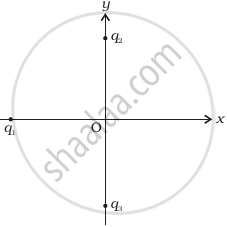 (a) |
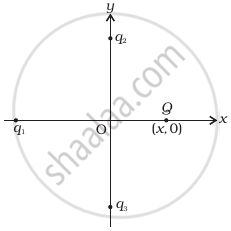 (b) |
Figure shows the electric field lines around three point charges A, B and C.
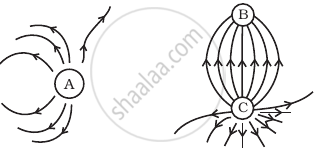
- Which charges are positive?
- Which charge has the largest magnitude? Why?
- In which region or regions of the picture could the electric field be zero? Justify your answer.
(i) near A, (ii) near B, (iii) near C, (iv) nowhere.
The magnitude of the electric field due to a point charge object at a distance of 4.0 m is 9 N/C. From the same charged object the electric field of magnitude, 16 N/C will be at a distance of ______.



